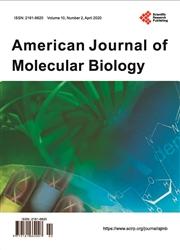Diversity and Distribution of Staphylococcal Chromosomal Cassettes Mec (SCCmec) Types I, II and III in Coagulase-Negative Staphylococcal Strains Isolated from Surfaces and Medico-Technical Materials of the University Hospital of Abomey-Calavi/Sô-Ava
引用次数: 0
Abstract
The coagulase-negative staphylococci (CoNS) have long been considered to be low pathogenicity. The possibility of a horizontal transfer of resistance and virulence genes from S. aureus to CoNS could increase the pathogenicity of these bacteria. showed resistance to methicillin. However, only 28.5% (20/70) carried the mecA gene. SCCmec was identified in only 17.14% (12/70) of these strains. Four strains carried mecA gene as well as one of the three types of SCCmec searched. SCCmec types I, II and III were identified in CoNS strains studied. SCCmec type I was the most frequent chromosomal cassette in mecA + strains, only or in association with another SCCmec. The study also revealed methicillin-resistant strains carrying SCCmec lacking the mecA gene. Finally, 60% (12/20) of the strains were found to be non-typeable. Our results show that CoNS strains present a high resistance to methicillin and the source of this resistance in the CoNS of our study is not only the mecA gene. There is also a high diversity of SCCmec, justified by a large number of non-typeable CoNS strains. The mecA − SCCmec + methicillin-resistant strains deserve to be sequenced for further studies.Abomey-Calavi大学医院表面和医疗技术材料中分离的凝固酶阴性葡萄球菌I型、II型和III型葡萄球菌染色体卡带Mec (SCCmec)的多样性和分布/Sô-Ava
凝固酶阴性葡萄球菌(con)一直被认为是低致病性的。耐药和毒力基因从金黄色葡萄球菌水平转移到con的可能性可能会增加这些细菌的致病性。对甲氧西林有抗药性。然而,只有28.5%(20/70)携带mecA基因。SCCmec检出率仅为17.14%(12/70)。四株菌株携带mecA基因,以及三种SCCmec类型中的一种。在研究的con菌株中鉴定出ⅰ、ⅱ和ⅲ型SCCmec。SCCmec I型是mecA +菌株中最常见的染色体盒式,仅存在或与另一种SCCmec相关。该研究还发现了携带缺乏mecA基因的SCCmec的耐甲氧西林菌株。最终发现60%(12/20)的菌株不可分型。我们的研究结果表明,con菌株对甲氧西林具有较高的耐药性,并且这种耐药性的来源不仅仅是mecA基因。SCCmec的多样性也很高,这是由大量不可分型的con菌株所证明的。mecA - SCCmec +耐甲氧西林菌株值得测序以进一步研究。
本文章由计算机程序翻译,如有差异,请以英文原文为准。
求助全文
约1分钟内获得全文
求助全文

 求助内容:
求助内容: 应助结果提醒方式:
应助结果提醒方式:


